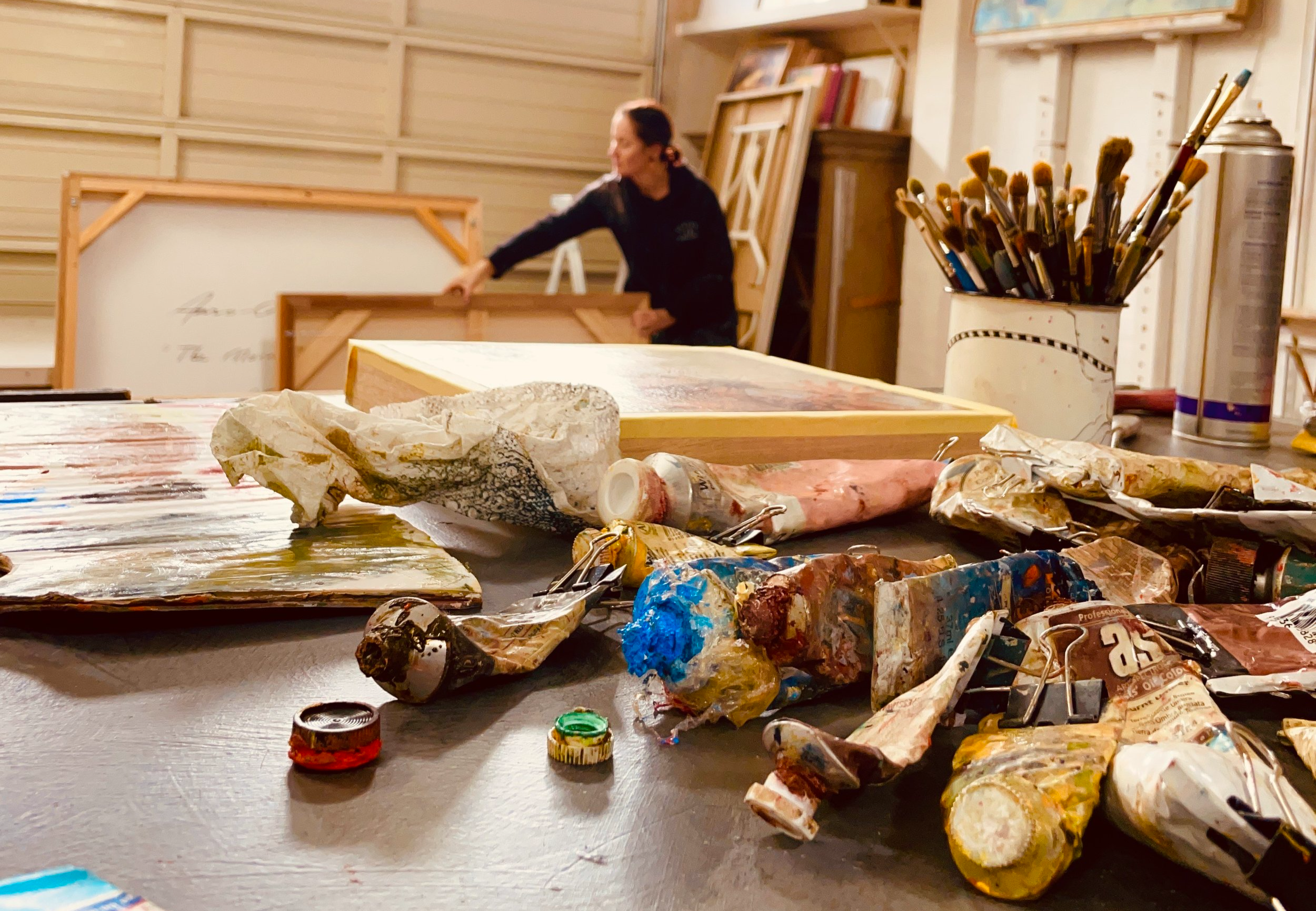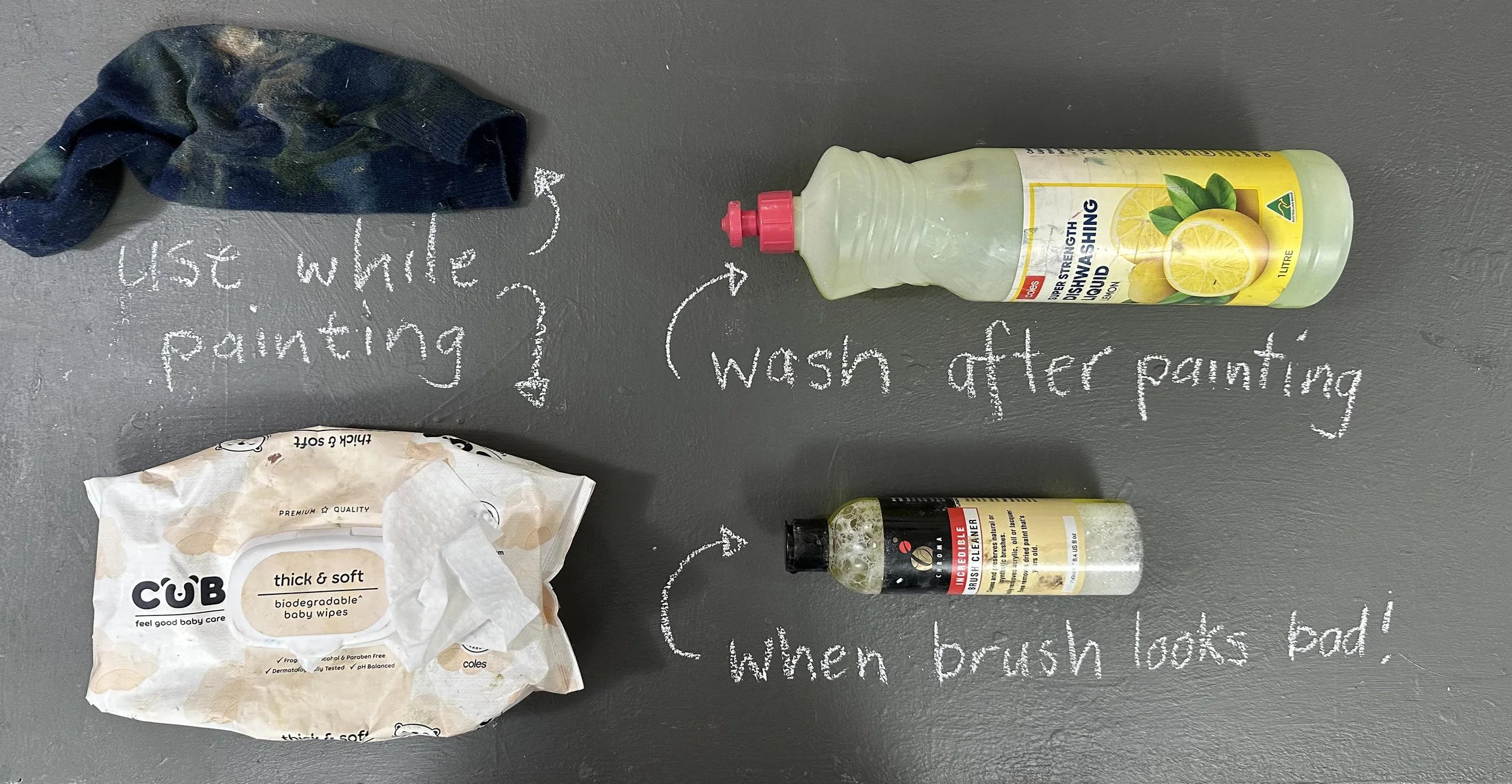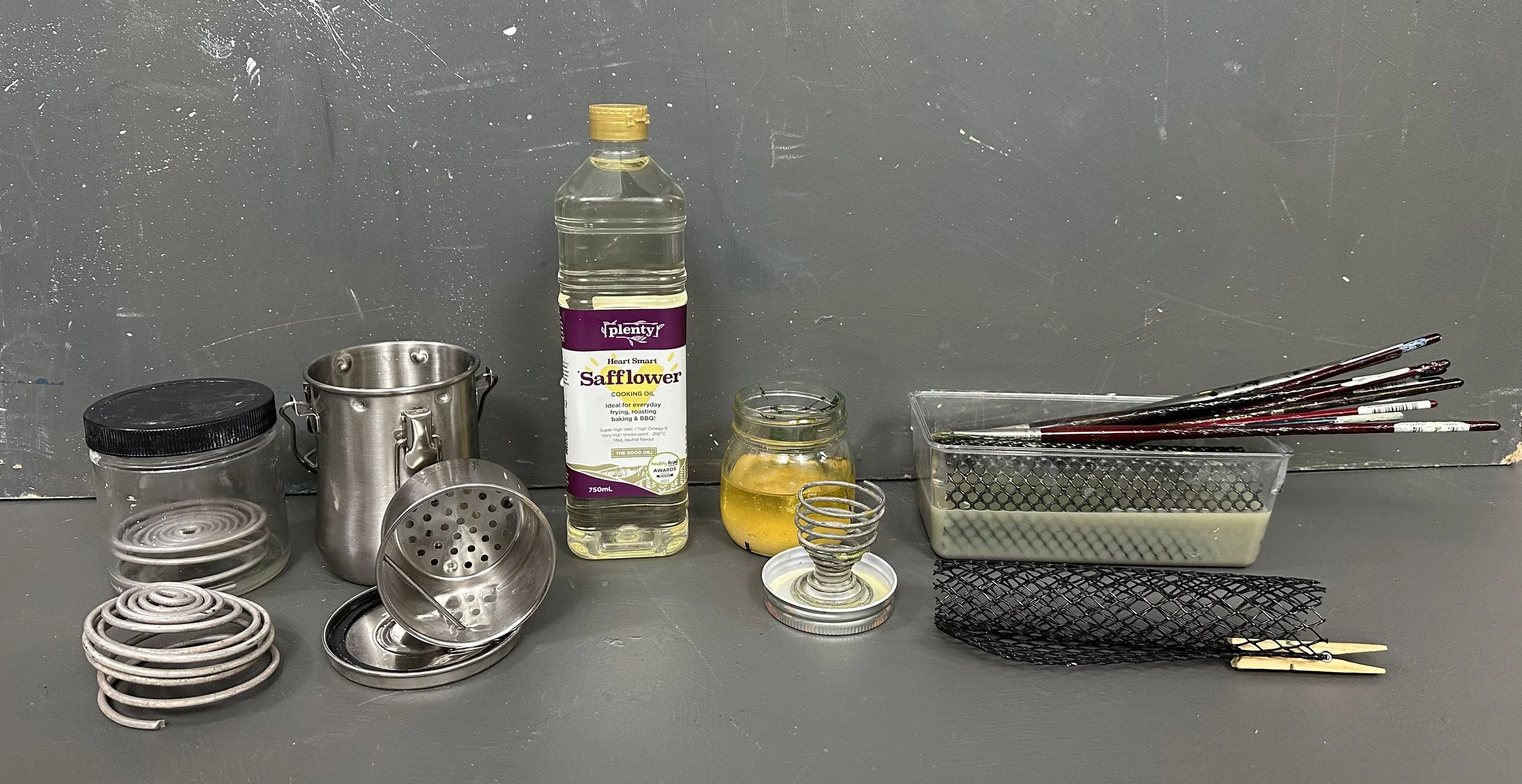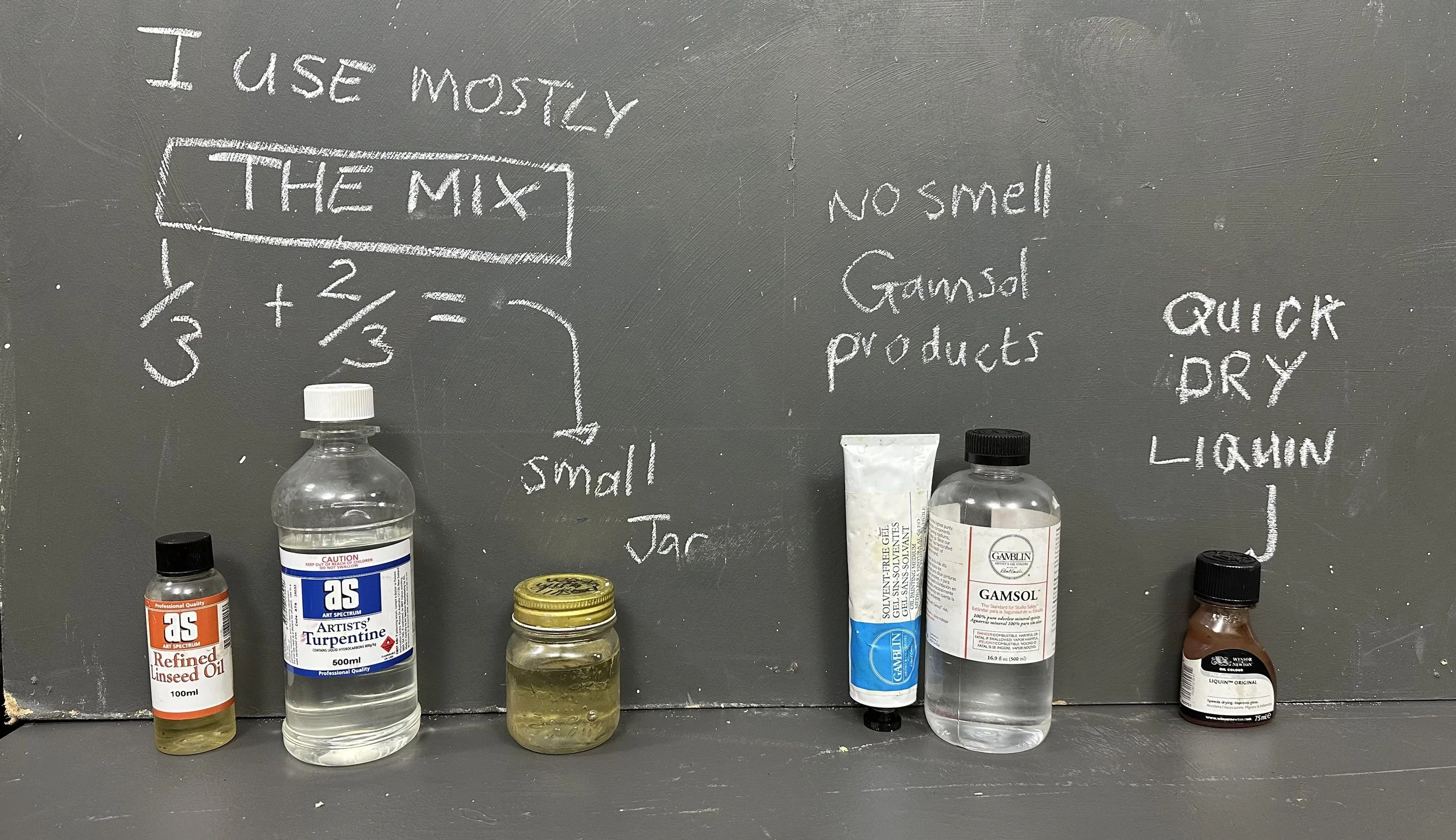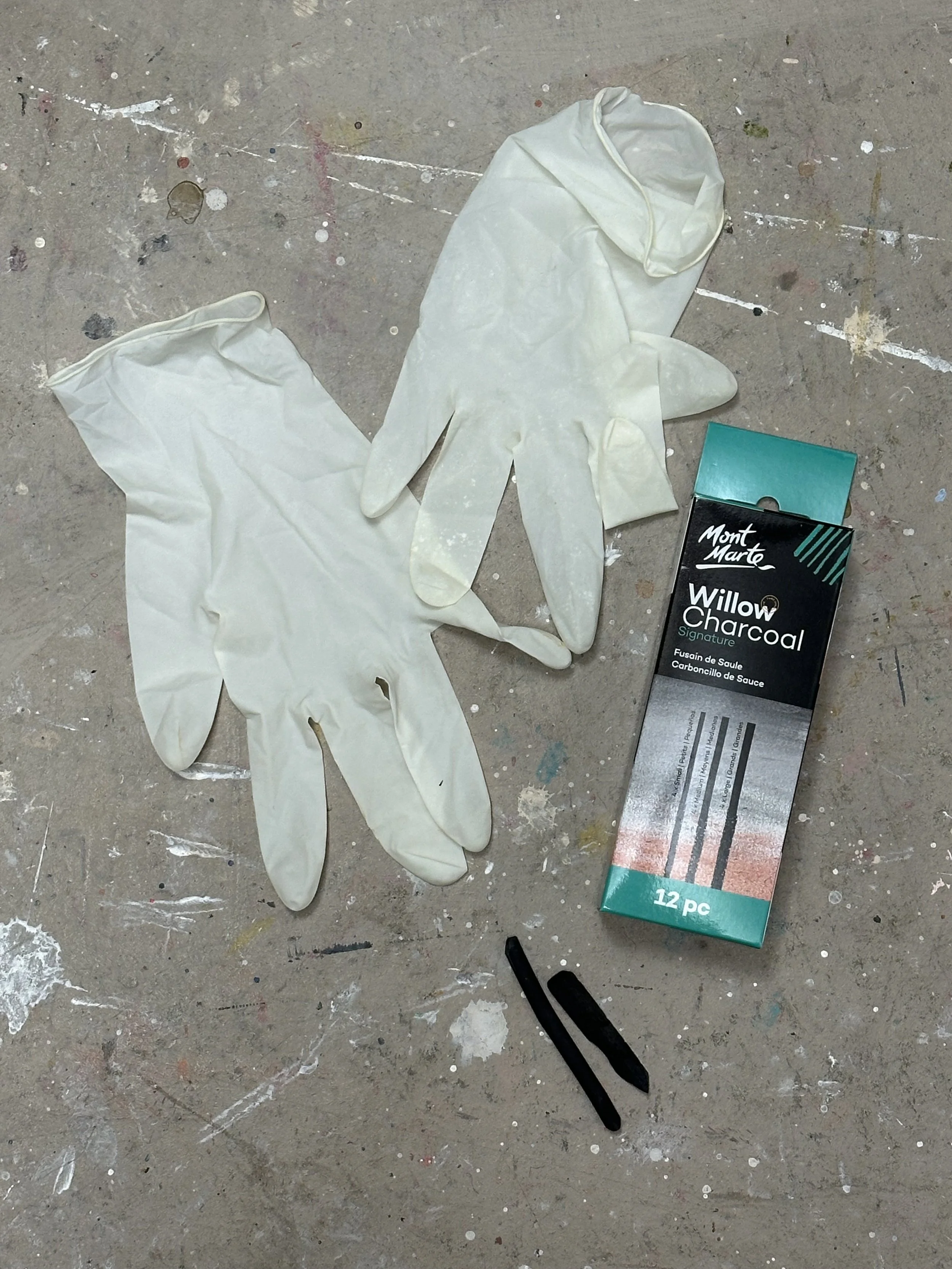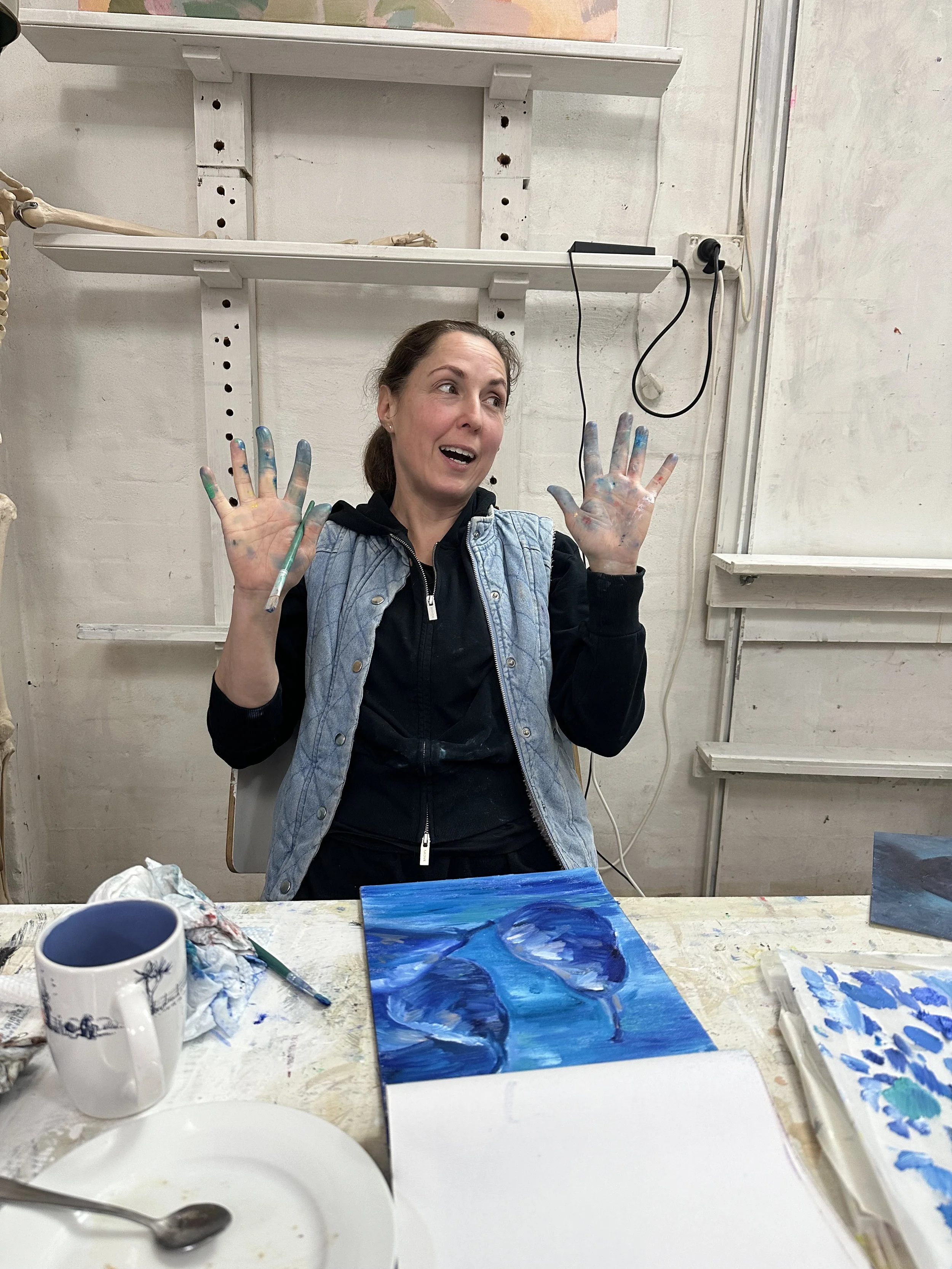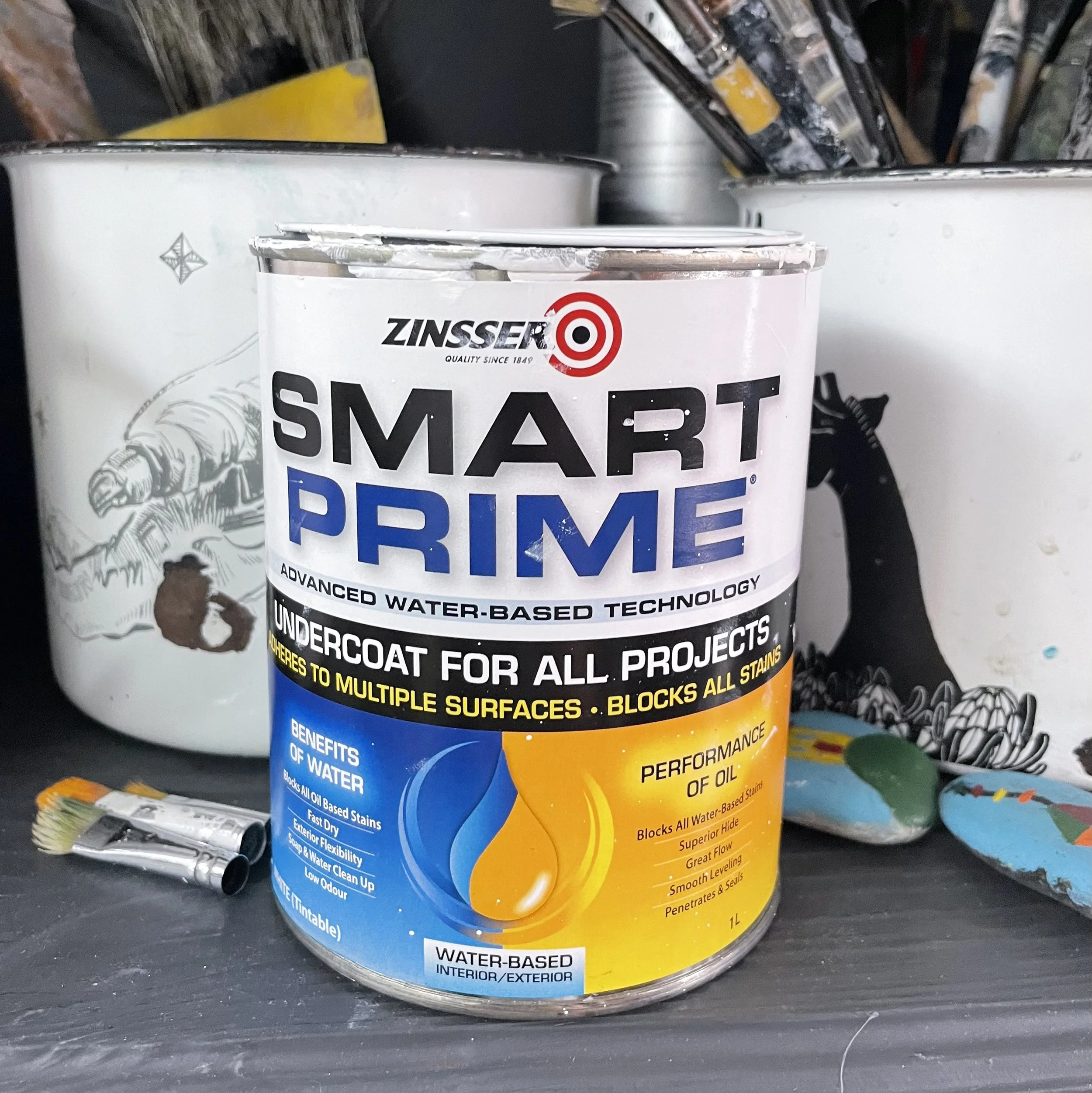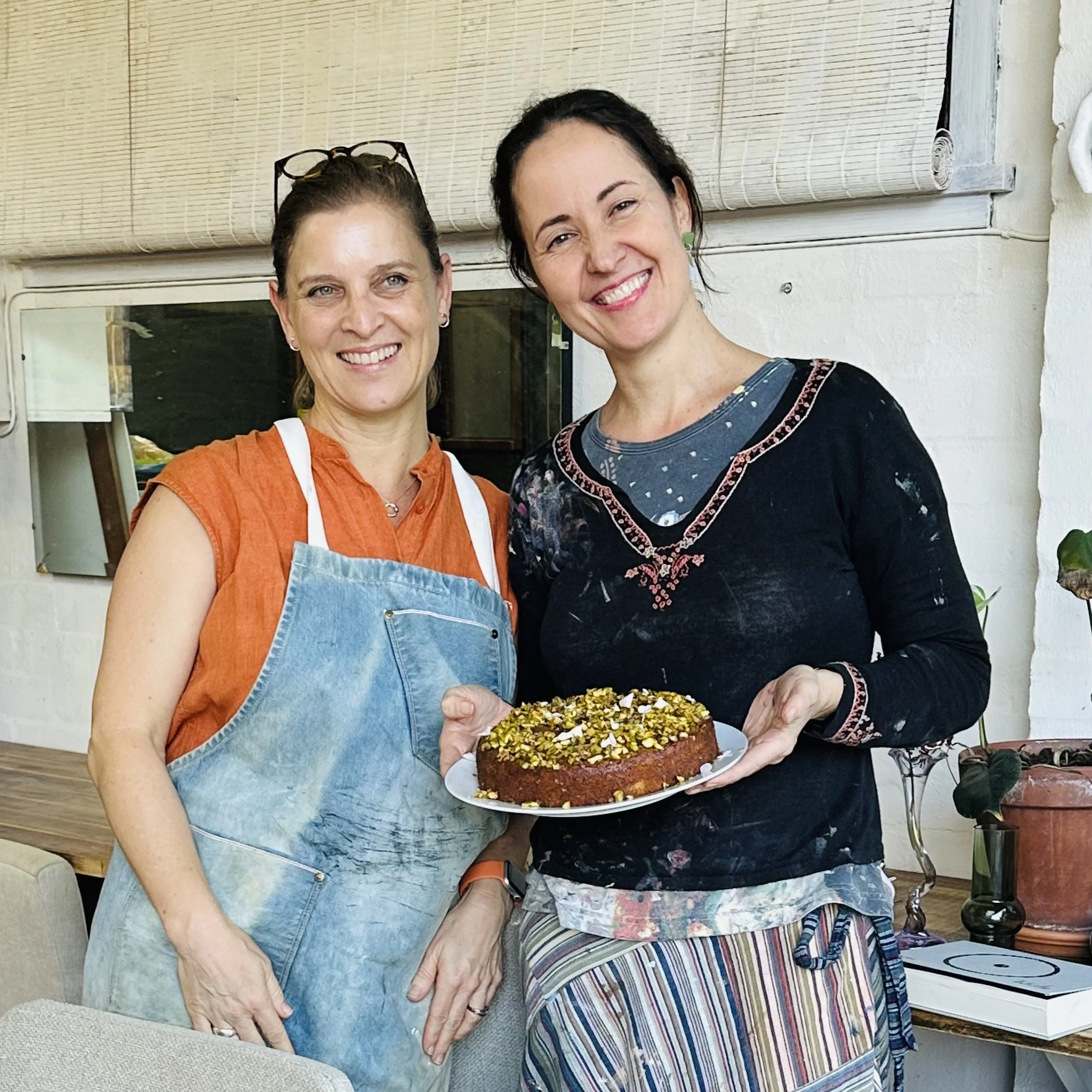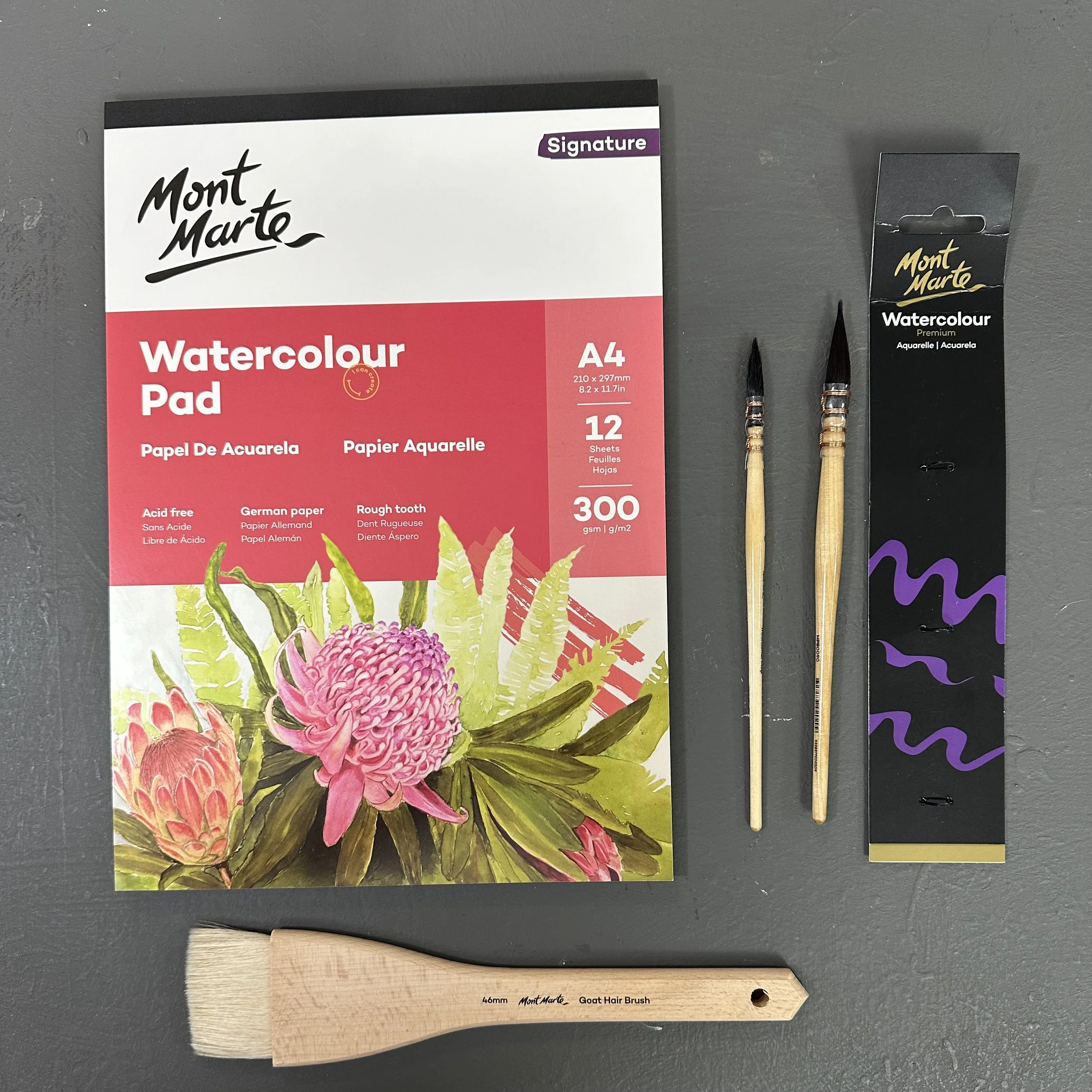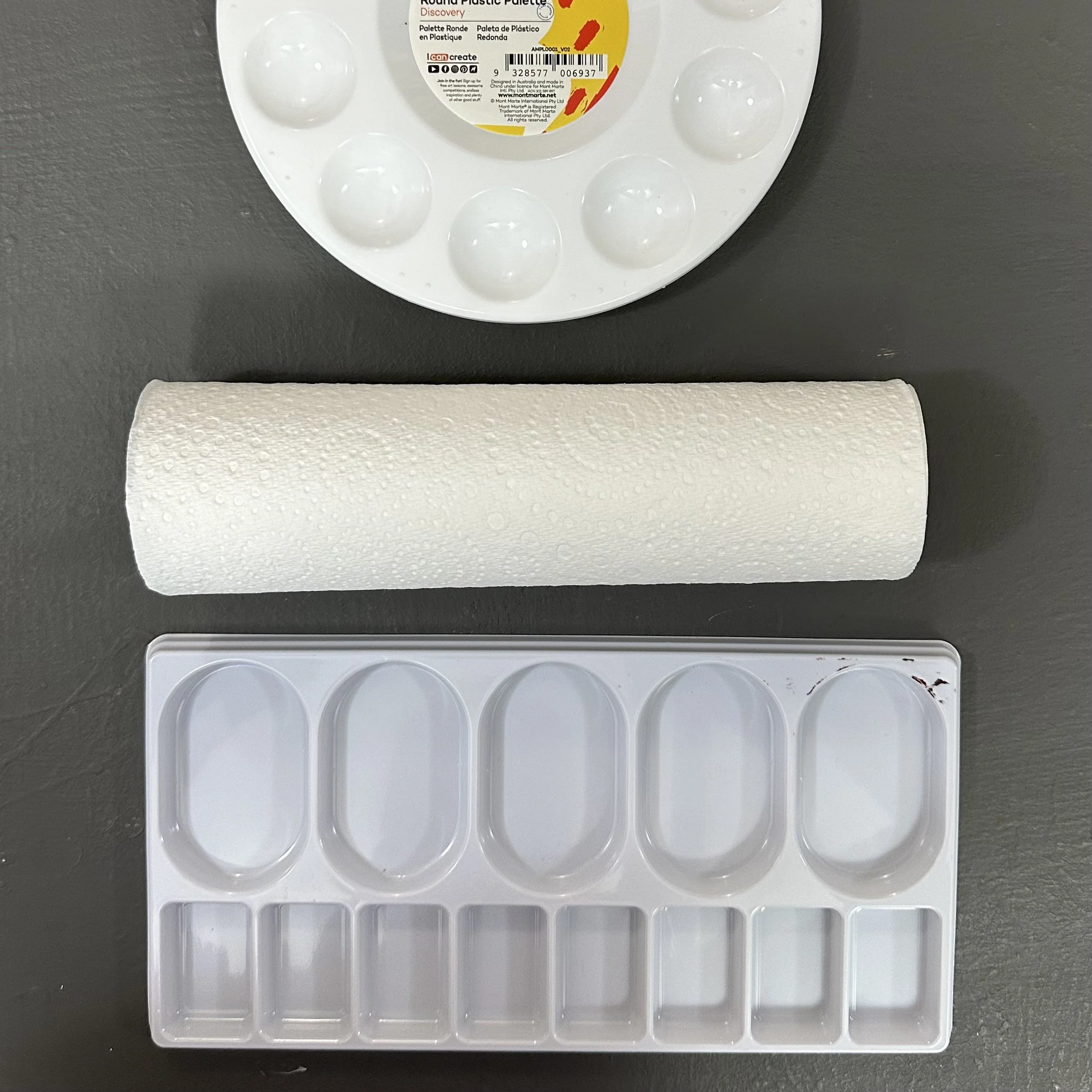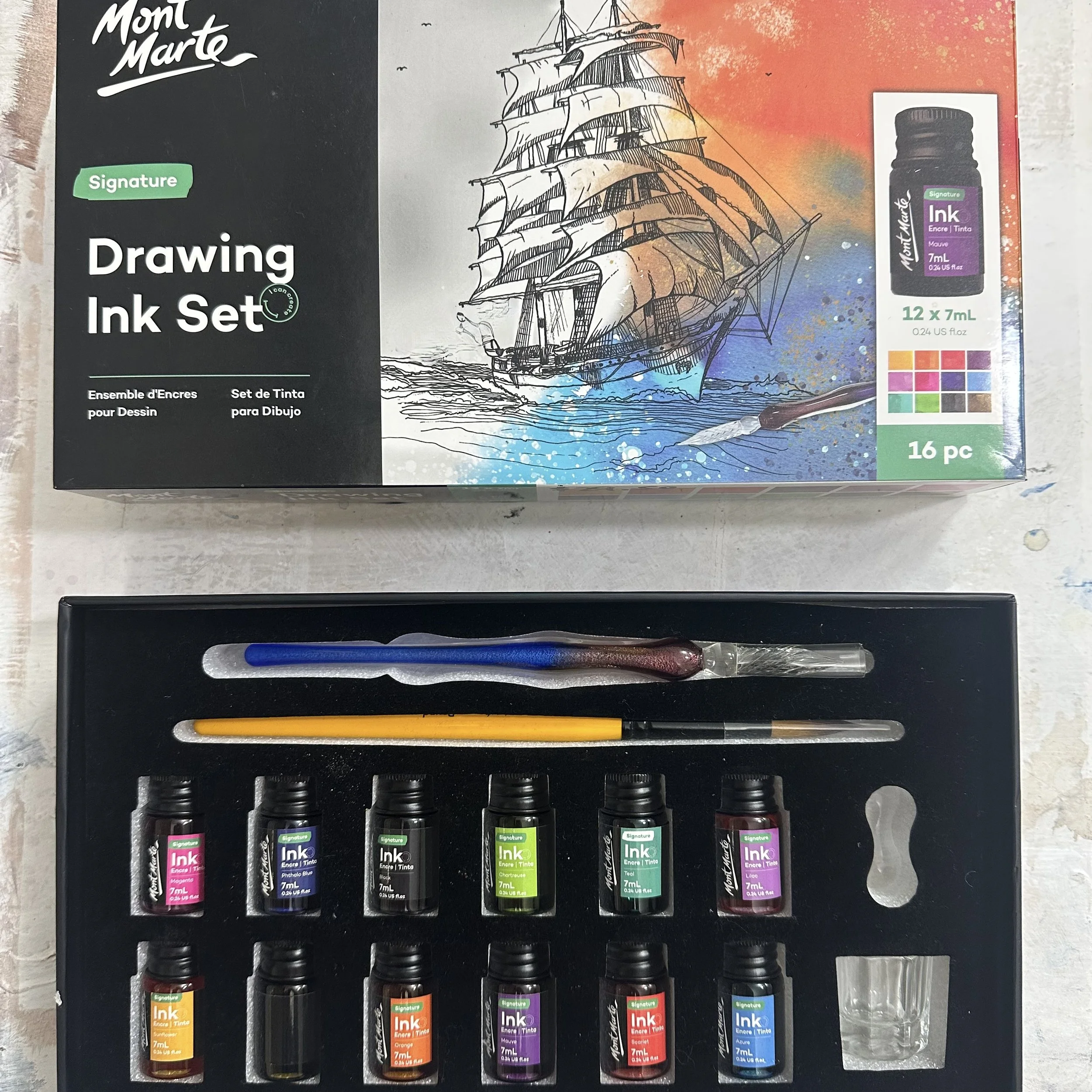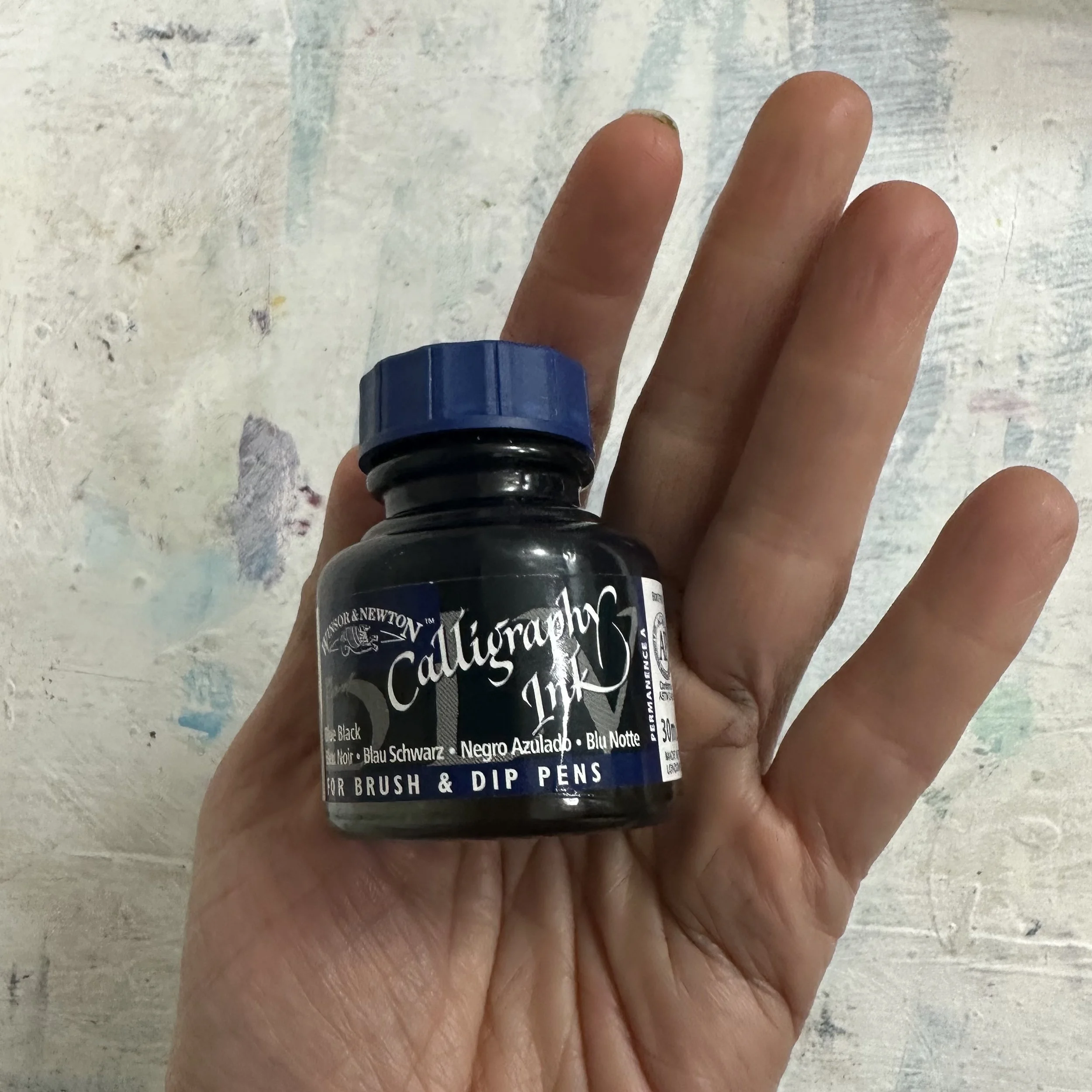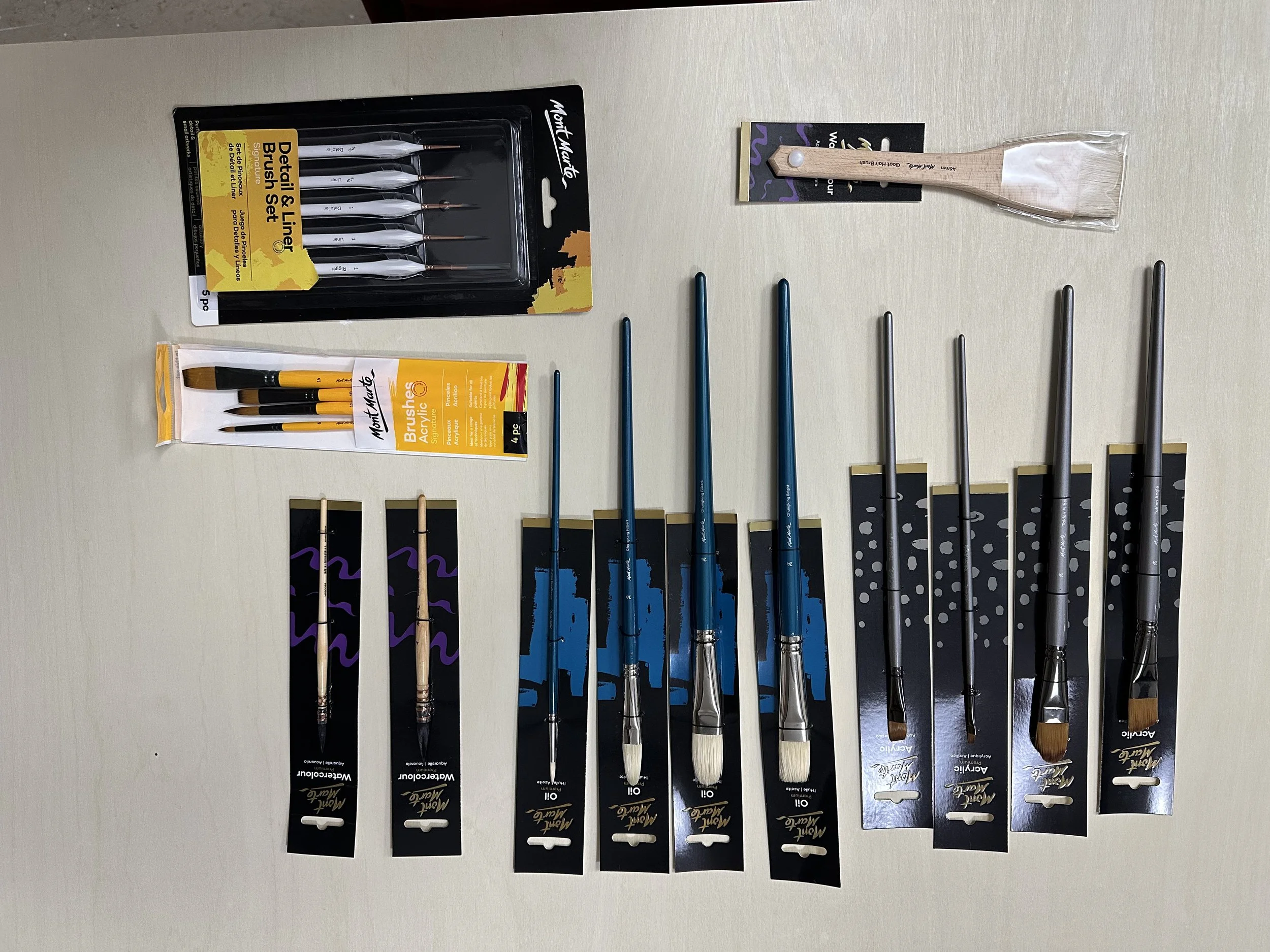What materials do I bring to Art Class?
On top of an experimental attitude and a sense of humour, here’s what you’ll need to bring along with you to class.
Keep a balance between these two viewpoints:
Play with whatever you have available.
The act of making art is more important than the quality of materials used. A lack of materials shouldn’t stand in the way of your creativity! There can be freedom in using less valuable materials while we learn and practice, too, as less pressure for a polished outcome can allow for more spontaneity.
Use what you have, finish up all the slightly crinkled papers you’ve kept for years, all the cheap dusty canvases, and dig up your kid’s leftover watercolours.
Choose quality every time you can.
If your budget allows, buy good-quality materials. Quality art materials do make a difference, BUT, be careful not to get lost in the rabbit hole of amazing materials and then be too precious to ever use them!
This is a Comprehensive Materials List, so don’t let it overwhelm you. At the end of this post is a brief summary of the essentials.
You won’t need everything all at once.
The purpose of this list is to house everything to refer back to and build your toolbox as you go, at the speed that works for you.
Drawing Tools:
Sketchbook
Something to draw in, make notes in, and capture ideas. You’ll capture your progress over time amongst these pages. Once you get into the habit, it’ll become a diary you can’t live without.
Cheap option: any old notebook, even if it has lines.
My favourite option: Moleskine, unlined, slightly smaller than A4.
Pencils and Pens
Cheap and easy option: 2B pencil/s and a BIC pen.
My favourite option: aquarelle(watercolour) colour pencils, because they are soft. I don’t ever wet them or use them as watercolours.
Reference images.
Print them out big or use an iPad (which would have made the Old Masters soooooo jealous!).
Keep your reference materials and Pinterest inspiration ready for when you need them, and easy to see on a larger scale than your phone. Otherwise, print out your reference material on A4 or larger, so that you save time and effort.
Painting Tools:
A variety of brushes. Brushes are personal to your ‘handwriting’ and there is no right or wrong, only preference. If you’re just starting out, experiment with different ones to find what works for you.
Something to paint on.
Canvas, canvas paper, or anything you feel like, for that matter!
Palette. Something sealable and disposable.
Cheap option: Buy an A4 plastic book protector box and line it with baking paper.
You can then set out your paints, cover them between uses, and keep them fresh in the freezer without making a mess.
Your Toolbox
[pics of toolboxes]
For Oil Painters:
Cleaning Stuff
A bottle of safflower oil (from the cooking section of the grocery store)
A jar/container
A scrubbing coil that fits in the jar/container (a few examples of these below)
Dish soap for cleaning wet paint off brushes
“Incredible Brush Cleaner” for cleaning dry paint off brushes
An old rag / sock
Baby wipes
We don’t use turpentine to clean in class. The fumes are bad for you, and some people in class might be sensitive or even allergic.
I’ll elaborate on this in class.
You can buy a scrubbing coil online or repurpose something from home, like an egg holder or some gutter guard. Some of my students use an old Feta cheese container with its built-in strainer!
Painting Stuff
If you’re working in oils, you’ll need solvents to thin out paint or to glaze with.
There are a few options below, but I use mostly a mix of artist-refined turpentine and linseed oil.
A palette knife for mixing
Gloves if you are messy
The next big question is what paints do I buy?
When you come to class for the first time, bring what you have (if anything) so that I can take a look and see if you’re missing anything.
Once again I hold two opposite positions to be true:
I wish you to have and enjoy every single colour in the art store! We are lucky to be alive in a time when so much is available to explore!
I’m going to teach you to work with limited palettes. This is the way I work because it creates mood, strength, and is easier to handle!
For beginners starting from scratch:
My suggestion is to buy a set of small 20ml Winton tubes from Winsor & Newton.
The set of 10 makes it possible for you to do all the exercises we have in class.
The set of 20 allows you to test many more colours that I also love, and you might too.
Each artist discovers their individual lean towards certain colours over time, and that is why every teacher could give a different list of essential colours.
In the meantime, as your understanding grows, these sets will show you quickly which colours you use the most. When it’s clear what colours you are most enjoying, you can replace them with the standard 37ml tubes and maybe even try out another good brand while you’re exploring!
You will also need to buy a larger Titanium White tube because the small one in the set will get used up super fast!
The colour in the Winton Oil Colour 10 x 12ml Tube Set contains:
Cadmium Lemon Hue
Cadmium Orange Hue
Cadmium Red Deep Hue
Magenta
French Ultramarine
Cerulean Blue Hue
Viridian Hue
Burnt Sienna
Lamp Black
Titanium White
The Winton Oil Colour 20 x 12ml Tube Set includes those above, PLUS the following colours:
Chrome Yellow Hue
Scarlet Lake
Permanent Rose
Cobalt Violet Hue
Phthalo Blue
Emerald Green
Sap Green
Pale Rose Blush
Yellow Ochre
Vandyke Brown
Different Whites: (from left to right)
1. Mont Marte’s cheap student paint
2. Flake white
3. Gamblin’s Radiant White
4. Griffin Alkyd Titanium white
Now I’m going to give you a list of colours I love and use.
This is for experienced painters to look at and compare with what they have in their box.
Some bonus add-ons you may or may not need:
An apron or designated art clothes
Plastic gloves
Charcoal
A very good primer (Smart Prime) that also protects against mould
Possibly a sweet treat to share!
For Acrylic Painters:
Follow the oil paint colour list from earlier in the post and choose what you like.
Full disclosure: I am going to try to indoctrinate you into oils, but I do have lots of hardcore acrylic apostates in my classes that stick to acrylics no matter what, so don’t let that worry you! I’ve survived three sons ignoring my advice, and I still love all of them!
Below are some of the art materials I have for sale in the art class. I am a stockist for Mont Marte, which is useful for students on a budget, though I do prefer you to buy higher-quality artist materials, which I can’t supply. Look online for the best prices.
For Watercolourists:
This list is for beginners, or people who want to take a quick, experimental foray into watercolour.
If you’re experienced, you will probably be using fancier paper and paints, so ignore this list and keep on doing what you’re already doing.
300g paper (the cheapest you’re allowed to go is Mont Marte, when you get better, move on to Arches, or Fabriano)
Soft brushes (European or Eastern)
Watercolour set according to your budget (Mont Marte is surprisingly good for a cheaper brand, or Cotman tubes or Gansai Tambi that we all love!)
Some sort of Ink. (We use BLUE BLACK calligraphy ink from Winsor & Newton, or buy a nice set from Mont Marte that includes a glass pen and brush)
Ink or calligraphy pen, or bamboo pen
Paper towel and palette
Quick Summary
If you weren’t taking notes through all of that, do not fear! Here’s a list for you.
For Everyone:
Drawing Tools
Sketchbook (any notebook, ideally unlined Moleskine ~A4)
Pencils & Pens
Cheap: 2B pencil, BIC pen
Preferred: Aquarelle colour pencils (used dry)
Reference Images
Printed A4 or larger
iPad or larger screen for viewing
Painting Tools
Brushes (variety to experiment with)
Painting Surface
Canvas, canvas paper, etc.
Palette
Cheap option: Plastic document box + baking paper (sealable & freezer-friendly)
Your Toolbox
Toolbox or container to organise and store your tools
For Oil Painters
Cleaning Supplies
Safflower oil (from grocery store)
Jar/container for brush cleaning
Scrubbing coil or mesh (e.g. egg holder, gutter guard, feta cheese container)
Dish soap
“Incredible Brush Cleaner” (for dried paint)
Old rag/sock
Baby wipes
Note: No turpentine to clean in class due to fumes/allergies
Painting Supplies
Solvents: Artist-refined turpentine + linseed oil (for thinning/glazing)
Palette knife
Gloves (optional)
Paints
Suggested for Beginners:
Winton Oil Colour 10 x 12ml Set
Winton Oil Colour 20 x 12ml Set
Large tube of Titanium White
Optional / Bonus Items
Apron or art clothes
Plastic gloves
Charcoal
Primer
A sweet treat to share
For Acrylic Painters
Follow the Oil Paint Colour List
Use acrylic-compatible surfaces
For Watercolourists
300g paper
Cheap: Mont Marte
Better: Arches or Fabriano
Soft brushes (European or Eastern)
Watercolour paints
Mont Marte
Cotman tubes
Gansai Tambi
Ink
Winsor & Newton Blue Black calligraphy ink
Mont Marte ink set with glass pen
Ink/calligraphy/bamboo pen
Paper towel & palette
p.s. Below are some supplies I keep in-house in case you need a top-up during class or you ran out of time to visit the art store.

